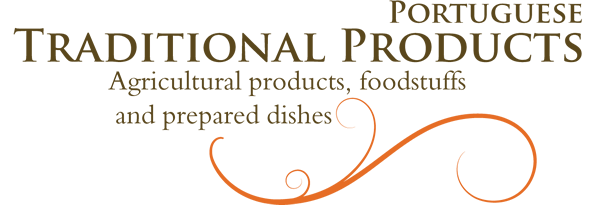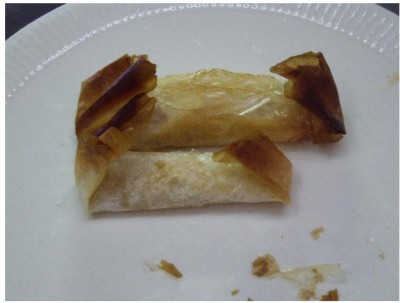Description: This is a sweet pastry originally produced in convents, the thin dough of which (0,06-0,15 mm) is made using a combination of water and flour and the creamy filling from a combination of egg yolks and eggs with sugar syrup. The product may be presented either as a thin tube (‘palito’), a miniature tube, a crescent or a miniature crescent.
Production method: The production method include the following phases: production of pastry; preparation of the filling, shaping of the pastry, baking and cooling.
Special features: The specific qualities of ‘Pastel de Tentúgal’ are derived firstly from the production method used to obtain a delicate and fine dough, with a thickness of between 0,06 mm and 0,15 mm. Comprising only water and wheat flour, the dough undergoes several stages in which production customs play a great part, including the way in which it is handled in order to achieve the desired thickness. Secondly, from the expertise em-ployed when handling this dough is fundamental to the shaping of the ‘pastel’; the result is a product whose thin layers are placed in such a way that the filling does not escape. And thirdly, from the extremely fine, almost transparent dough layers, together with the egg-based creamy texture, provides an external and internal appearance, a consistency, flavour and texture which are individual and which make it a unique product.
Production area: The geographical area in which ‘Pastel de Tentúgal’ is produced is restricted to the small town of Tentúgal and is bounded to the east by the town of Lamarosa (municipality of Coimbra), to the north by the village of Portela, to the west by the village of Póvoa de Santa Cristina (parish of Tentúgal) and by the town of Meãs (municipality of Montemor-o-Velho) and to the south by the ‘Vala Real’ waterway.
History: “Pastel de Tentúgal’ originates in the Convent of Our Lady of the Nativity, where it was manufactured by the sisters of the Carmelite Order who resided there between 1565 and 1898. Since the late 16th century, it was at the Convent where the knowledge and expertise was acquired which has given rise to a unique product, something which has been attested in many sources found in a wide range of publications.
Product specification (pdf)
Producer group
Associação dos Pasteleiros de Tentúgal
Control and certification body
Kiwa Sativa – Unipessoal, Lda.
Control plan
Control plan (pdf)
Publication in EU official journal
Regulamento de Execução (UE) 850/2013 da Comissão de 23 de agosto de 2013 – JO L 235/1 de 4.9.2013
Publicação do pedido de registo (2012/C 302/15) – JO C 302/31 de 6.10.2012
Publication in the Portuguese official journal
Aviso (extrato) n.º 8087/2013, de 25.06.2013
Aviso n.º 13041/2021, de 12.07.2021
Aviso (extrato) n.º 13444/2024/2, de 02.07.2024



